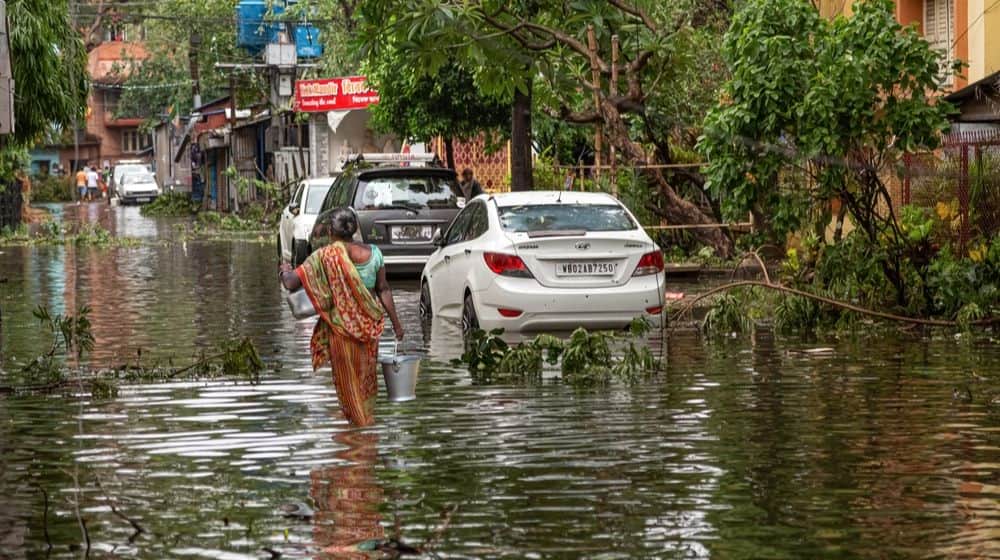Breaking News
Mumbai Spared, But Heavy Storms Ahead in 2020

Cyclone Nisgara was on a destructive path straight through the Indian city of Mumbai. At the last moment, the Category 4 storm veered off course, causing havoc in less populated areas. As the storm tears through other Indian cities, experts warn that more destructive weather events are in store for 2020. Even more vexing, powerful storms may become the new normal.
Mumbai Spared Rare Cyclone
Horrific visuals as cyclone Nisgara made landfall in Maharashtra #CycloneNisarga #Cyclone #Nisargcyclone #Nisarga #Mumbai #Maharashtra #India https://t.co/EVlK8BI3so
— The Pigeon Express (@PigeonExpress_) June 3, 2020
This week, the world watched nervously as Cyclone Nisgara gathered strength and barreled directly for the city of Mumbai. The major metropolis is the country’s financial capital, home to 20 million people. It has struggled in the last month with surging coronavirus cases. Additionally, its medial infrastructure would have been further overwhelmed by the devastation of the Category 4 Cyclone.
The eye of the storm ultimately missed the city, and nearby coastal towns took the brunt of Niscara’s power. The Indian government had already evacuated tens of thousands of people from the coast. However, around ten people so far have been confirmed dead as a result of the storm.
While the cyclone loses power and moves further inland, India is picking up the pieces. According to experts, however, India and the rest of the world should brace for more powerful hurricanes, cyclones, and other destructive weather in 2020. Thanks to climate change, “previously” rare super storms may become the new norm in the future.
Heavy Storms Ahead in 2020
Two weeks ago, the National Oceanic and Atmospheric Administration Climate Prediction Center released its hurricane forecast for 2020. As has been the trend over the past 25 years, the forecast was grim, with an expected six to ten hurricanes hitting US shores. In a worrisome addition, the report also said three to six storms could become major hurricanes. The forecast was made with 70% confidence.
The main reasons for the high activity are a heavy rainy season in West Africa. Apart from that, warmer than average water temperatures and weak winds in the Atlantic also help cause high activity. Warmer water provides hurricanes with the energy needed to fuel massive hurricanes. Meanwhile, weak trade winds allow them to sit over one area of warm water, gathering strength.
“Unusually warm” waters are now par for the course in any given year, and scientists are confirming that means heavy hurricane seasons are here to stay.
Global Weather Events Are Getting Worse
Trending News – Active Atlantic Hurricane Season Predicted For 2020: Today marks the beginning of Atlantic hurricane season, and the National Oceanic and Atmospheric Administration (NOAA) Climate Prediction Center says an above-normal… https://t.co/jkvJZGt78S – Share Today pic.twitter.com/uNGy1Oe6ZM
— AZ Landscape and Irrigation (@arizonasolution) June 1, 2020
As the National Academy of Science published this year, both hurricanes and tropical cyclones are on a steady trend toward higher frequency and intensity. The study determined that over the last 50 years, the probability of a hurricane becoming very powerful has increased by nearly 10%. As water temperatures continue to rise, it is difficult to determine whether this trend will accelerate further, but it is virtually certain to at least persist.
As the article states, more frequent, powerful storms have huge ramifications for society. Insurance providers will need to adjust their models. They're questioning whether a “once in a decade” storm is more like a “once every five years” storm. This could mean higher premiums for owners of homes and businesses in high-risk areas, or even an unwillingness to insure at all in danger zones like Miami or Puerto Rico.
As time goes on, the coastal cities along the warm waters of the Atlantic and Caribbean will face an increasingly difficult trade-off. Beautiful weather and beachfront property will come at the cost of frequent devastation at the hands of superstorms. High-risk cities will have to find ways to prepare their communities to face this risk and to mitigate the damage that these storms can bring.
Up Next:
